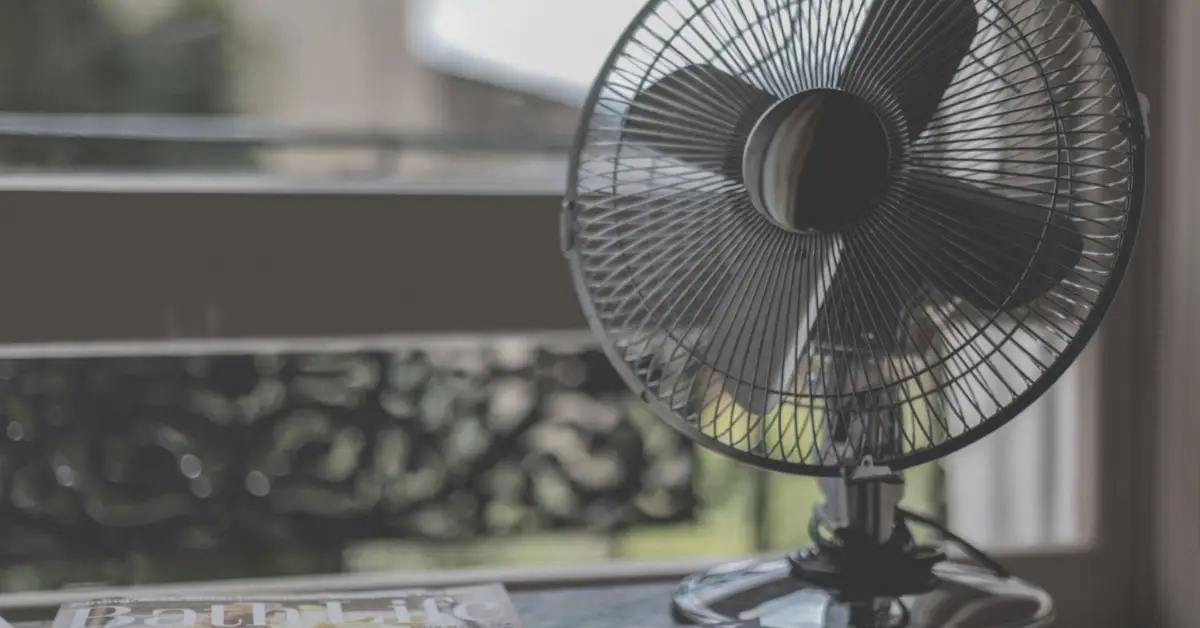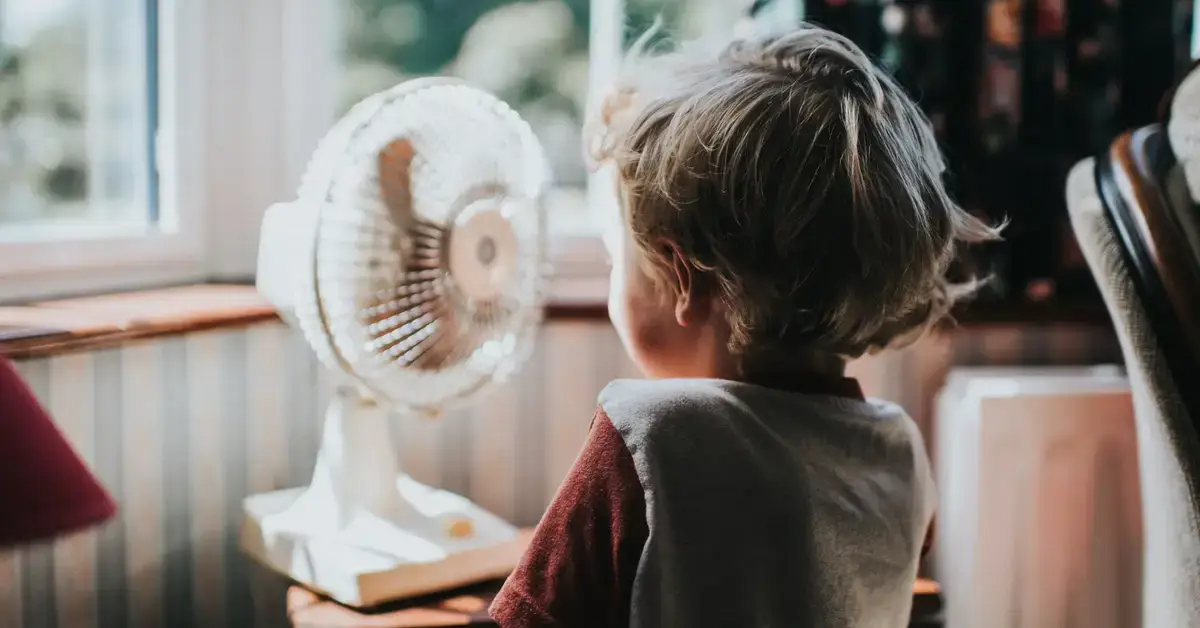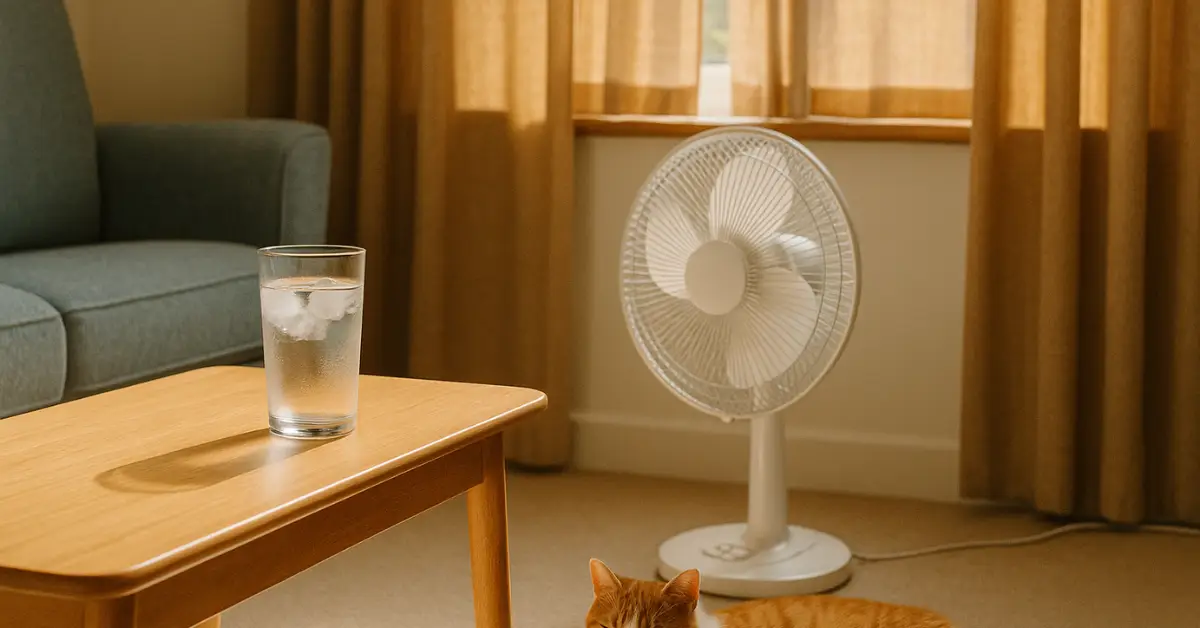7 Proven Fan Tricks to Maximize Home Cooling
I’ve lost count of how many summer nights I’ve sat in a room that felt more like an oven than a home. You flip the fan on, hoping for relief, but all it does is push the same hot air around. I’ve been there — sweating on the couch, wondering if fans are even worth the electricity. The truth? They can work, but only if you know the tricks.
Most guides online toss the same advice at you — “open a window,” “put ice in front of a fan,” “switch ceiling direction.” They’re not wrong, but they also skip the details that actually make the difference. I’ve tested these hacks myself, dug into what experts say, and found out which ones work and which ones are just internet myths.
If you’re tired of wasting energy on fan setups that don’t cool a thing, you’re in the right place. I’ll show you seven simple methods that not only make a room bearable in the heat but also explain why they work. By the end, you’ll know exactly how to set up your fan so it doesn’t just blow air — it cools you down.
Before we dive in, tell me: when you turn on your fan, does it feel cooler right away, or does the room stay stubbornly warm?
Trick 1: The Ice-Bowl Cooling Hack
Step-by-step setup with fan + ice bowl
I’ve used this one on more sleepless nights than I can count. All you need is:
- A sturdy bowl (metal works best because it holds the chill longer)
- A few handfuls of ice cubes or even frozen water bottles
- A regular table fan or pedestal fan
Here’s how I set it up: place the bowl of ice right in front of the fan, angled so the airflow passes directly over the ice surface. As the ice melts, the air hitting you carries a cooler, damp feel — almost like a mini homemade air conditioner. If you want it to last longer, swap the cubes for large frozen bottles; they melt slower and can be refrozen overnight.
Why it works: evaporative cooling explained in simple terms
Think of it this way: when water turns to vapor, it pulls heat out of the surrounding air. Your fan speeds up that process by pushing air across the ice, which helps spread the cooled, moisture-rich air through the room. It’s not going to drop the temperature by 10 degrees, but in a stuffy room, you’ll feel the difference almost instantly.
Experts at Energy.gov explain that fans don’t technically lower the temperature on their own — they move air across your skin or surfaces, which increases evaporation and makes you feel cooler. Add ice into the equation, and you’re enhancing that natural cooling effect.
Trick 2: The Cross-Ventilation “Window Pull”

Place one fan facing inward, another outward
If you’ve ever walked into a breezy hallway, you’ve felt how powerful airflow can be. The same principle works in your home. I place one fan in the window pulling air into the room, while another sits across the space or in a second window blowing air outward. What happens is simple: fresh air comes in, stale hot air gets shoved out, and the entire room feels lighter within minutes.
Works best in evening or night for pulling cooler air
Here’s the catch — this trick works best when the air outside is cooler than the air indoors, which usually happens in the evening or at night. During a heatwave afternoon, you’ll only end up dragging in more hot air. But after sunset, when the outside air dips a few degrees, the setup creates a steady flow that feels like natural AC.
To make it even more effective:
- Keep interior doors open so the airflow isn’t blocked.
- Use box fans in windows instead of small desk fans for stronger pull.
- Darken the room with curtains during the day so heat doesn’t build up in the first place.
If you’ve ever wondered why “just opening a window” didn’t cool your room, this is why. Placement and timing matter more than the window itself. Once you try it, you’ll realize how much faster the room clears out that heavy, trapped heat.
Trick 3: The Wet Sheet or Damp Curtain Method
Safe way to drape fabric in front of fan (avoid blades)
This hack feels like something out of grandma’s playbook, but it works. Take a lightweight cotton sheet, soak it in cold water, wring out the excess, and hang it safely in front of your fan. The key word is safely — never let the fabric touch or get sucked into the blades. I usually clip mine onto a drying rack positioned right in front of the fan. That way, the airflow moves across the damp surface without risk.
Temporary evaporative cooling — like a DIY swamp cooler
As the air passes through the damp sheet, it picks up moisture. This process — evaporative cooling — drops the perceived temperature, giving you a cool breeze instead of just moving hot air around. It’s especially effective in dry climates where humidity is low, because the water evaporates faster. If you live somewhere already humid, though, this trick won’t feel as refreshing and can even add a sticky heaviness to the air.
Trick 4: Ceiling Fan Direction & Speed
Switch to counter-clockwise in summer
If you’ve ever stood under a ceiling fan that felt like it wasn’t helping, chances are the blades were spinning the wrong way. In summer, you want the fan set to rotate counter-clockwise at a higher speed. This pushes cool air down, creating that gentle “wind chill” effect that makes your skin feel cooler.
Why blade angle matters
It’s not just direction — the blade pitch matters too. The angle determines how much air is actually moved. A flat blade barely circulates air, while a steeper angle (usually around 12–15 degrees) pushes a stronger breeze. According to Energy Star, adjusting your ceiling fan correctly can let you raise your thermostat setting by about 4°F without losing comfort. That means lower AC bills and less strain on your system.
Trick 5: Smart Fan Positioning

Fan in doorway → pushes cool air through house
Sometimes, it’s not about what fan you use but where you put it. If you’ve got a cooler room in the house — like a shaded living room or basement — position a fan in the doorway to push that cooler air into the hotter areas. I’ve done this on scorching afternoons, and it feels like redirecting a pocket of relief.
Low placement vs. high placement depending on hot/cool air movement
Here’s where a little physics comes in: hot air rises, cool air sinks. That means placing your fan lower to the ground can help push cooler air up into the room, while a fan placed higher can help sweep out trapped heat near the ceiling. Play around with levels and you’ll feel a noticeable shift in comfort.
Trick 6: DIY Exhaust Fan Setup
Box fan in window blowing outward
One of the fastest ways I’ve cleared a stifling room is by setting a box fan in the window — but facing outward. Instead of pulling air in, this setup pushes the hot, stale air out of your space. You’ll feel the difference within 10–15 minutes, especially if you crack another window open across the room to let in fresh air.
Works for removing hot trapped air quickly
Think of it like a “heat flush.” During the day, homes trap layers of warm air that don’t escape easily. By evening, when outside temperatures drop, using a fan to exhaust that hot air resets the room quickly.
Trick 7: Combine Fans With Other Cooling Aids
Pair with blackout curtains, LED lights, turning off appliances
I’ve learned that a fan alone can only do so much. The real difference comes when you cut down the other sources of heat around you:
- Close blackout curtains during the day so sunlight doesn’t turn your room into a greenhouse.
- Switch to LED bulbs — they run cooler and save energy at the same time.
- Unplug appliances you’re not using — computers, TVs, and ovens all throw off more heat than you’d think.
When you combine these small changes with your fan, the air it circulates is already cooler, so you feel the effect instantly. If you’re serious about cutting down indoor heat, pairing fan use with eco-friendly changes — like better insulation or switching to greener habits — makes a huge impact. You can check out our guide on how to make your home eco-friendly with simple resolutions for more easy steps that go hand in hand with these fan tricks.
Humidity matters — fans less effective in high humidity
Here’s the catch: fans rely on evaporation to cool you down. In humid weather, the air is already packed with moisture, so sweat doesn’t evaporate as fast. That’s why the same fan feels refreshing in Arizona but sticky in Florida. If you live in a humid area, pairing your fan with a dehumidifier or running it at night when the air is drier can make a huge difference.
Safety & Efficiency Tips

Don’t run fans in sealed hot rooms (can make heat worse)
This is a mistake I’ve made myself: shutting the door, cranking the fan, and expecting relief. The truth is, a fan in a sealed, overheated room just pushes the same hot air around. It only works when air has a way to move in and out.
Proper ventilation is just as important as fan placement. In fact, simple habits like the German practice of Lüften — controlled indoor airing can drastically improve indoor air quality year-round while helping your fan do its job more effectively.
Cleaning fan blades = better airflow
Over time, dust builds up on blades and grills, choking airflow. A quick clean not only improves circulation but also keeps allergens down. It’s a small step that makes your fan feel brand new.
Avoid electrical overload in heatwaves
Summer heat waves often push us to run every fan and device at once, but that can overload circuits and even become a fire risk. Spread devices across outlets, avoid daisy-chained extensions, and give your wiring a break.
For extra efficiency, think ventilation. Energy.gov explains that using fans alongside proper ventilation reduces heat buildup and cuts down the need for heavy AC use. In other words, fans don’t just keep you cool — they also help your home breathe better when used smartly.
Key Takeaways & Next Step
- Ice bowl hack: turns a regular fan into a mini-cooler.
- Cross-ventilation setup: one fan pulls air in, another pushes it out.
- Damp sheet trick: works like a DIY swamp cooler, especially in dry climates.
- Ceiling fan direction: set it counter-clockwise in summer for maximum breeze.
- Smart positioning: doorways and low-to-high placement matter more than you think.
- Exhaust setup: box fan facing outward clears trapped hot air fast.
- Combine with aids: blackout curtains, LEDs, and reduced humidity make fans more powerful.
- Stay safe: always keep airflow paths, clean blades, and avoid electrical overloads. And while you’re making your room cooler, why not make it smell fresher too? Try these DIY natural air fresheners that pair perfectly with improved airflow for a more inviting home environment.
Fans may not replace air conditioning, but when used wisely, they can transform a hot, heavy room into a space you can actually relax in.
Now I’d love to hear from you: which fan hack do you swear by, or is there one you’re excited to try next? Share your thoughts in the comments below. And if you want more practical, home-tested guides like this, head over to Build like New for fresh ideas on making your home more comfortable and efficient.
Disclaimer: The tips shared here are for general home comfort only. Always follow manufacturer instructions for your fan and electrical safety guidelines. Results may vary depending on climate, room size, and personal setup.


